On a recent Monday afternoon, chef Todd Aarons was mixing ground rib-eye beef that he had aged as much as 28 days in his custom aging box at 26 Restaurant, Aarons’ high-end kosher meat restaurant in Pico-Robertson. Pastrami was in the smoker, and a pastry chef was lighting the apple- and oak-wood oven where Aarons grills and roasts his lamb, duck and rib-eye steaks.
But the discussion soon turned to what he plans to prepare for his own family for Passover, when the restaurant is closed and Aarons and his Israeli-born wife, Nava, and their four daughters bring in their kosher-for-Passover cooking equipment — replete with a spice grinder and Cuisinart — from a shed in their backyard in North Hollywood.
A Veal Breast Roulade came to mind. “I have a two-part cooking process that works really well,” the affable Aarons, 44, said as he settled into a cream-colored chair in his restaurant’s loft-like dining room. First, he’ll stuff the breast with a sausage rendered from veal trimmings, spiced with what he described as “a traditional French mixture for charcuterie: black pepper, ginger, cinnamon and coriander.” Then he’ll roll up the meat and roast it before braising it in fine apple cider — finishing off the plate with an accompaniment of caramelized cipollini onions and roasted pears.
“I also like to do something [on] the grill, because it keeps the kitchen cleaner when we cook something outside,” Aarons said, suggesting, perhaps, marinating split chicken hens in a Middle Eastern-inflected puree of preserved lemon, garlic and parsley before grilling them to a crispy perfection.
Aarons envisions his seder meat centerpiece as akin to the simple but robust turkey that graces Norman Rockwell’s painting of a Thanksgiving feast, but his eclectic flavors mirror his own culinary and spiritual journey.
After growing up in a traditional Ashkenazic household in Los Angeles, Aarons began keeping kosher after taking classes at Aish HaTorah, while working under chef Peter Hoffman at New York’s famed (and now closed) Mediterranean restaurant Savoy; he became Shabbat-observant while living and working in Israel; and he later created the concept and the menu for the highly acclaimed kosher Tierra Sur in Oxnard, a Mediterranean restaurant heavily influenced by Spanish cuisine. At 26 Restaurant — where after Passover he plans to change the establishment’s name, as well as the menu, to more bistro-style — Aarons’ cooking has combined Mediterranean flavors with French cuisine, with dishes ranging from duck breast and confit duck leg with huckleberries, rhubarb and maple gastrique to braised beef cheeks with molé.
During his childhood in Cheviot Hills, the family Passover seders were at his Romanian maternal grandmother’s home in Canoga Park, where the meat staples included sweet-and-sour stuffed cabbage, as well as green and red peppers stuffed with ground beef and matzah meal, in a sauce redolent of paprika, tomato, peppers and onions.
It was Aarons’ mother who made the Passover brisket. “It was pretty straightforward, with the usual brown gravy and mushrooms,” he said. “And my mother, being a product of the 1950s, there was probably some Lipton’s onion [soup] mix in it.”
Yet, while the Passover food of his childhood remains among Aarons’ “zone of comfort food,” he said, he doesn’t find himself torn between convention and innovation. “I never keep any recipe just traditional; I like to mix it up, just not wanting to get bored with it,” he said. “Traditional family dishes, for most chefs, were inspirational for them to start cooking, but they don’t necessarily feel like they need to make [them] for themselves. The great thing about the nuance of those early dishes was that [they were] made by someone else for us, so brisket will always have a place in my heart when my mother makes it for me. Tradition can be the impetus or the fuel that leads you to continue the journey, but the journey is never-ending.”
Inspired by watching his grandmother and mother in the kitchen, and by the Mexican-American cuisine he enjoyed at the home of a childhood friend, Aarons went on to major in food science at Cal Poly San Luis Obispo, as well as to study at the California Culinary Academy in San Francisco, where he also apprenticed under chef Judy Rodgers at the rustic French Zuni Café.
It was during his tenure at Savoy in the 1990s that Aarons, who had been dabbling in Buddhism, began looking more deeply into his Judaism: “It seemed that everyone in New York was searching for something spiritual, and the last place you usually look is what you grew up with,” he said. “I was also getting older, I wanted to have a family, and I hoped to discover what ideas and values I would give them.”
In 1998, Aarons left Savoy to study at a yeshiva in Israel, where his cooking was profoundly influenced by the melting pot of Israeli immigrant North African and Sephardic cuisines.

Chef Todd Aarons
He celebrated his first Passover seder in Israel with his then-wife-to-be, Nava, whose extended Yemenite family (including 40 of her first cousins) helped bake pita-like matzahs in a backyard oven of their home in Netanya. Nava’s grandmother, “who literally walked out of Yemen with her children,” Aarons said, prepared lamb for the seder’s main meat course: “It was marak regel, a soup that was made with pieces of lamb leg that had a more muttony kind of flavor to it, and was spiced with turmeric, cumin and coriander,” Aarons recalled. A gelatinous garnish spiked with fenugreek was mixed into the soup to add texture.
All the while, Aarons incorporated the Jewish dietary laws into the Italian-themed menus he developed for the Cremcaffe chain in Netanya and Tel Aviv. “But I really felt like I wanted to go back to the restaurant scene in America; that was where I thought I could have the most influence,” he said.
In 2000, he opened his pan-Mediterranean bistro Mosaica in Vauxhall, N.J., before being wooed to Oxnard to serve as chef at Tierra Sur. Last year, when he arrived at 26 Restaurant, he helped the owner transform the menu from dairy to meat restaurant.
During Passovers past, Aarons’ own seder meals have featured a seared duck breast with braised baby turnips and dates, embellished with a blood orange gastrique and orange gremolata. His Persian chicken soup — with dried Persian limes, turmeric and mint, and embellished with matzah meal dumplings spiked with cardamom — was served at the White House seder with President Barack Obama in 2011.
Aarons’ suggested recipe for Journal readers this year spotlights a rack of lamb, rubbed with a blend of allspice, cumin, cloves and nutmeg, which is roasted before the chops are slathered with a fragrant pomegranate molasses.
“I never describe my food as kosher, because I think that, just coincidentally, it happens to be kosher,” he said. “I approach it as just good food, and the flavors that I enjoy preparing.”
POMEGRANATE GLAZED RACK OF LAMB
- 16 single-bone lamb chops
- 2 racks of lamb
- 6 garlic cloves, minced
- 1 tablespoon ground allspice
- 1 tablespoon ground cumin seed
- 1 teaspoon ground cloves
- 1/2 teaspoon ground nutmeg
- Salt and pepper
- Olive oil
- Pomegranate molasses
Preheat oven to 475 F.
For racks of lamb: Have butcher remove flap and shoulder blade and score outside layer of fat. Ask to have the bones frenched for presentation.
Rub racks with minced garlic, allspice, cumin, cloves, nutmeg and salt and pepper.
Heat olive oil in saute pan. Place racks flat side down in hot pan; turn to brown on all sides.
Stand racks in a roasting pan, interlocking the bones to hold each other upright. Place into oven and roast until a meat thermometer placed in middle of loin reads 125 F for medium rare or 130 F for medium.
Five minutes before removing from oven, baste with pomegranate molasses.
Let racks rest 10 minutes before slicing and serving. Sprinkle a little kosher salt on exposed loins of the chop and arrange onto a serving platter.

VEAL BREAST ROULADE
- 1 boneless veal breast
- Salt and pepper
- Olive oil
VEAL STUFFING
- 1 1/2 pounds ground veal
- 2 teaspoons kosher salt
- 3 teaspoons ground black pepper
- 2 teaspoons ground ginger
- 1 teaspoon ground cinnamon
- 1 tablespoon ground coriander
- 12 garlic cloves, minced
- 1/4 cup chopped fresh parsley
- 1/2 cup matzah meal
- 2 eggs
VEGETABLE STUFFING (ALTERNATIVE TO GROUND VEAL)
- 2 tablespoons olive oil
- 1/2 cup diced onions
- 1/4 cup diced celery
- 1/4 cup diced carrots
- 12 garlic cloves, minced
- 1 cup lightly packed ribboned greens (spinach, kale or collard greens)
- 1/4 cup chopped fresh parsley
- 1/2 cup matzah meal
- 2 eggs
- 2 teaspoons kosher salt
- 3 teaspoons ground black pepper
- 2 teaspoons ground ginger
- 1 teaspoon ground cinnamon
- 1 tablespoon ground coriander
BRAISE
- 1 quart apple cider
- 1/4 cup apple cider vinegar
- 3 bay leaves
- 2 cups unsalted chicken broth or water
ROASTED GARNISH
- 2 cups pearl or cipollini onions, peeled
- 6 apples or pears, quartered and peeled
- Olive oil
- Salt and pepper
Prepare Veal Stuffing:
In a large bowl, place ground veal with salt and pepper, ginger, cinnamon, coriander, half the minced garlic, parsley, matzah meal and eggs. Mix with a gloved hand or a mixer with paddle attachment until well emulsified.
Prepare Vegetable Stuffing:
Heat olive oil in a pan and saute onions, celery, carrots and half the minced garlic until translucent but not brown. Place into a mixing bowl and let cool.
Once cool, add greens, parsley, matzah meal, eggs, salt and pepper, ginger, cinnamon, coriander. Mix well until matzah meal swells and becomes thick. If needed, add a bit more matzah meal.
Assemble roulade:
Preheat oven to 475 F.
Lay the boneless veal breast flat, skin side down. The skin side will have a shiny coating of connective tissue and often a food-safe ink stamp. Slice off ink stamp.
Rub half of remaining minced garlic into veal breast, and season with salt and pepper.
Place stuffing mixture on breast, to within 1 to 1 1/2 inches of edge. Roll snugly, jellyroll style, encasing stuffing inside breast.
Cut 8 to 12 pieces of butcher’s twine, and tie securely around roast.
Rub outside of roast with remaining minced garlic, salt and pepper and a drizzle of olive oil.
Place roulade onto rack and set inside roasting pan. Put into oven and roast for approximately 45 minutes, until browned.
To Braise:
Take rack out and make sure there are no burnt drippings in the roasting pan. Place roulade in roasting pan and reduce oven to 250 F. Pour apple cider, vinegar, bay leaves and broth into the pan. The liquid should come halfway up the side of roast. You may add more cider or broth until you reach this level, but do not go higher. Cover roast with parchment paper and aluminum foil and place in oven for approximately 2 to 2 1/2 hours. The connective tissue will have broken down and the meat will be fork tender. Remove roast from braising liquid.
Prepare Roasted Garnish:
Toss onions and apple quarters in olive oil and season with salt and pepper. Heat a saute pan on stovetop, and add onions and apples. Toss until they become slightly caramelized. Place pan into a 350 F oven to finish cooking, approximately 15 minutes.
To finish:
Pour braising liquid into a heatproof glass bowl, cool slightly, and skim off fat. Transfer braising liquid to a saucepan and cook over medium heat until reduced by at least a quarter of its volume. Adjust seasonings. Serve in a gravy boat alongside roulade surrounded by caramelized onions and apples.
Makes 10 to 12 servings.









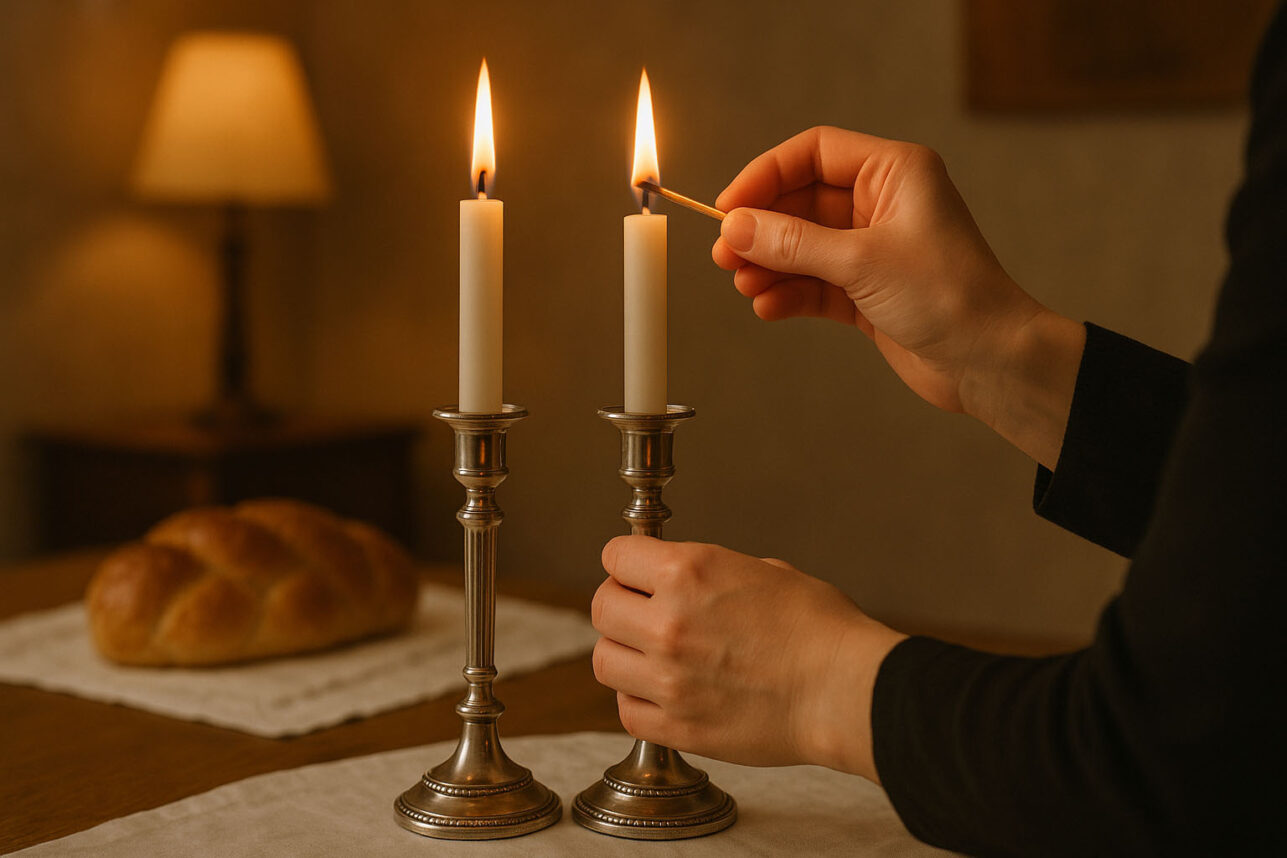
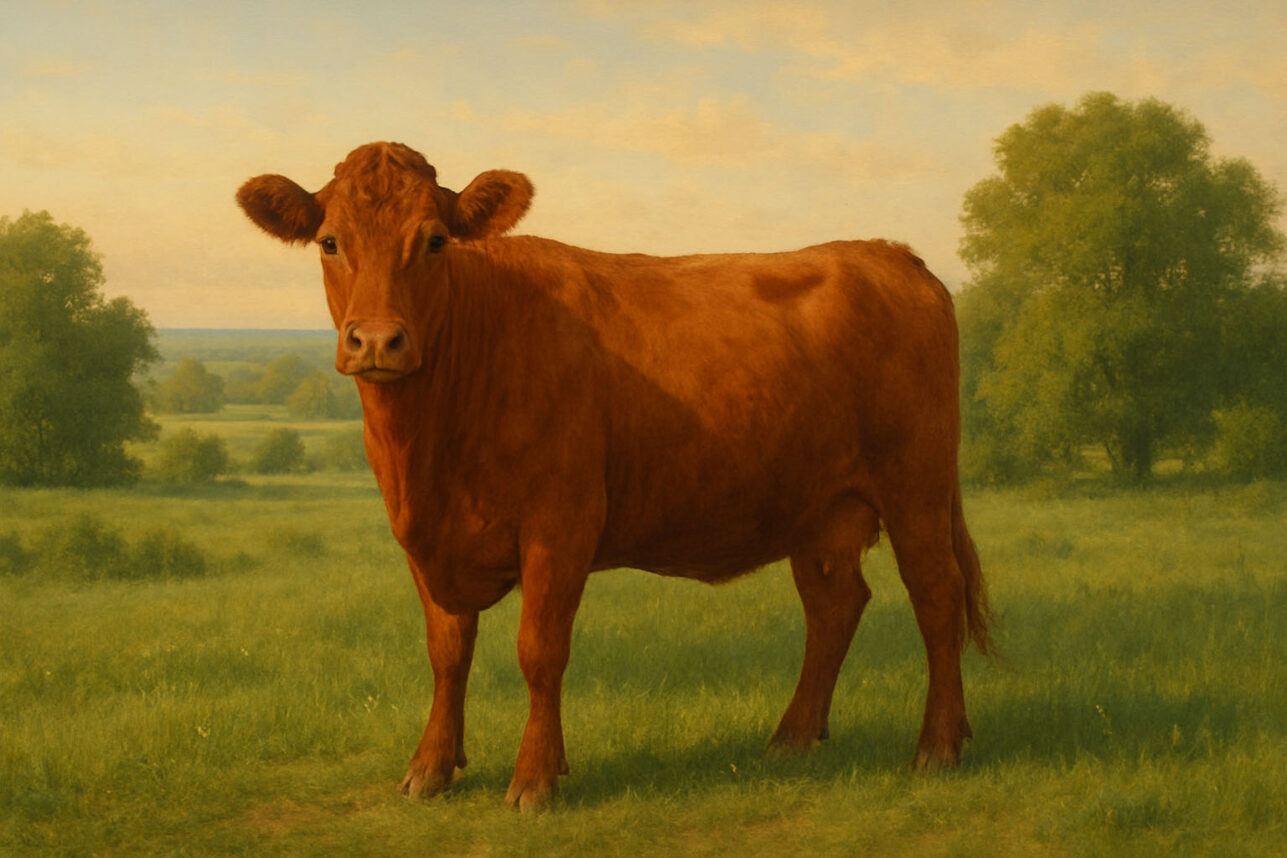

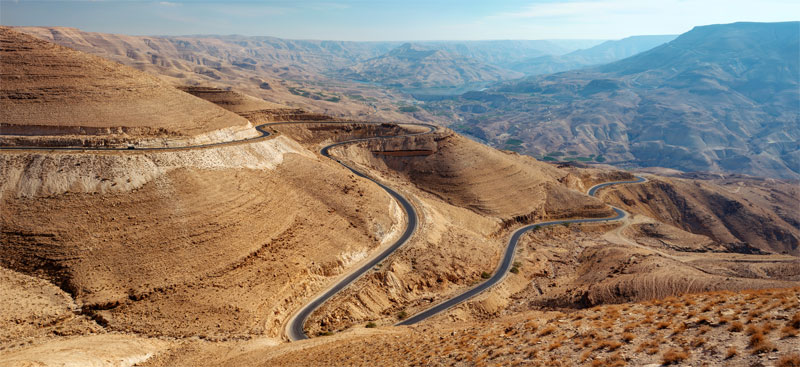







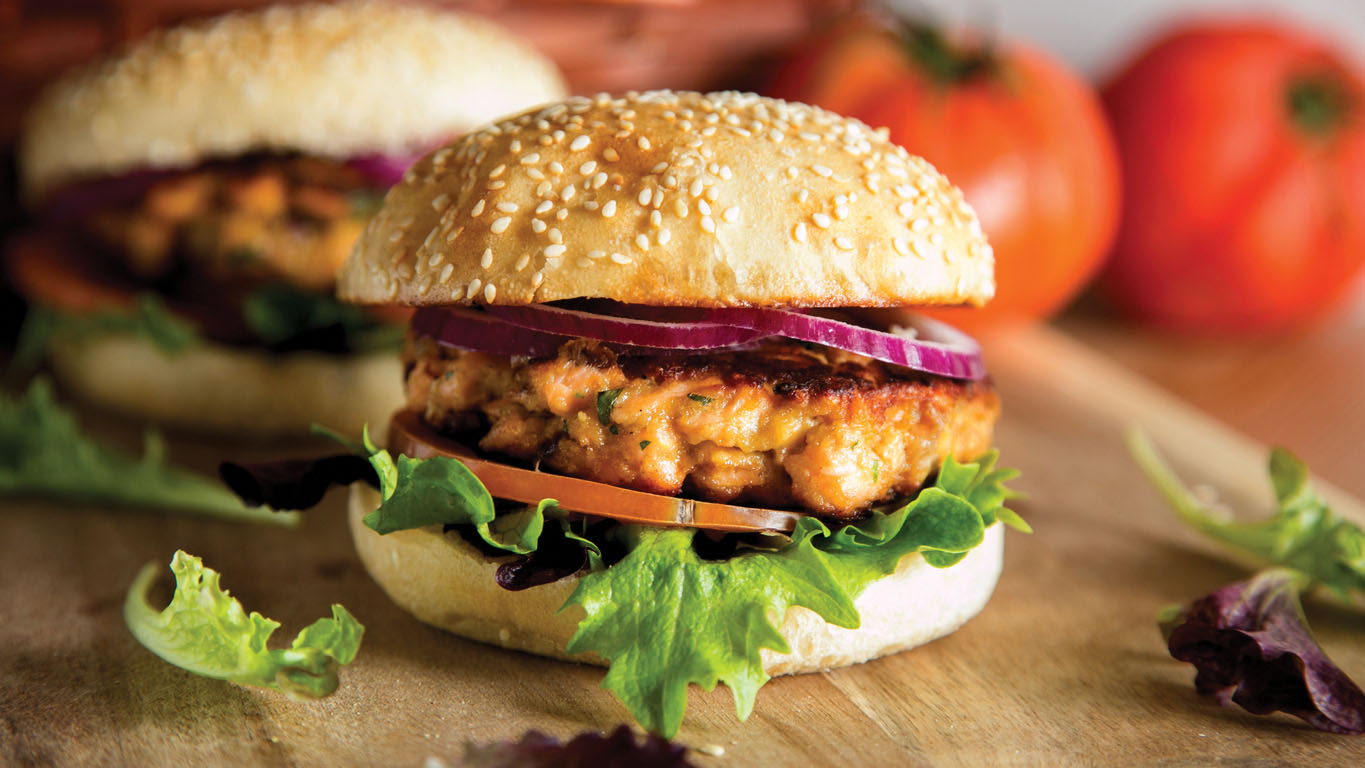
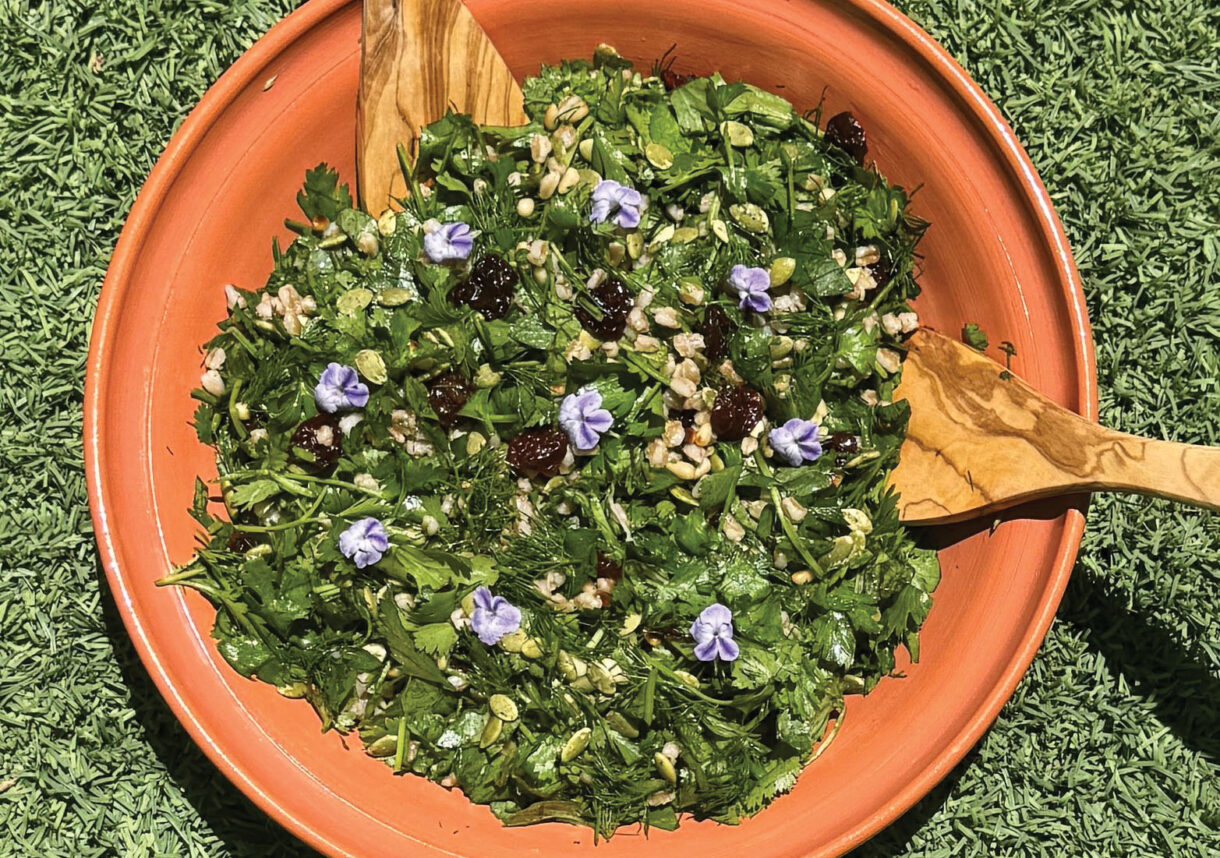


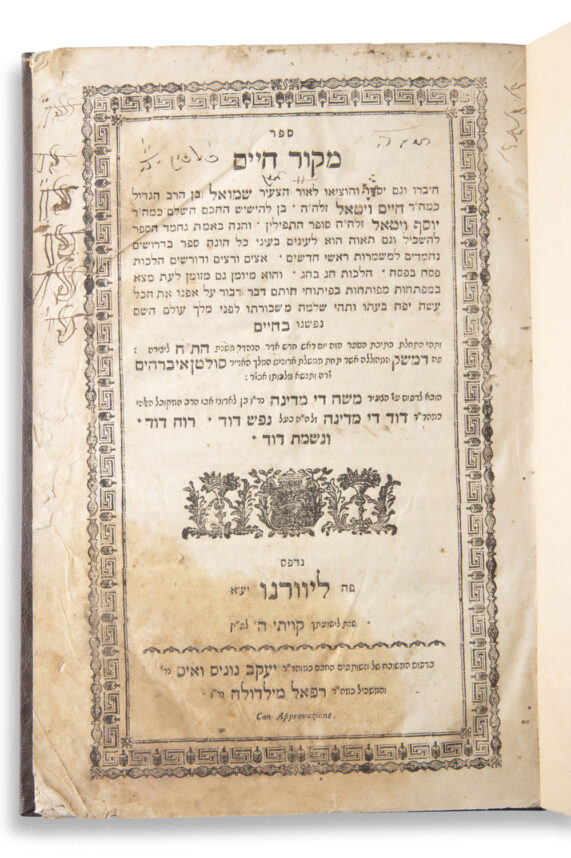








 More news and opinions than at a Shabbat dinner, right in your inbox.
More news and opinions than at a Shabbat dinner, right in your inbox.